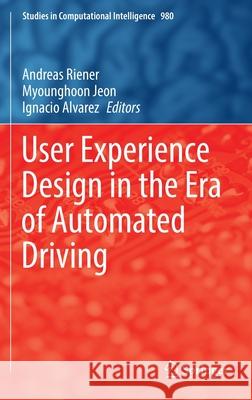User Experience Design in the Era of Automated Driving » książka
topmenu
User Experience Design in the Era of Automated Driving
ISBN-13: 9783030777258 / Angielski / Twarda / 2021 / 623 str.
User Experience Design in the Era of Automated Driving
ISBN-13: 9783030777258 / Angielski / Twarda / 2021 / 623 str.
cena 884,70 zł
(netto: 842,57 VAT: 5%)
Najniższa cena z 30 dni: 880,59 zł
(netto: 842,57 VAT: 5%)
Najniższa cena z 30 dni: 880,59 zł
Termin realizacji zamówienia:
ok. 20 dni roboczych.
ok. 20 dni roboczych.
Darmowa dostawa!
Kategorie:
Kategorie BISAC:
Wydawca:
Springer
Seria wydawnicza:
Język:
Angielski
ISBN-13:
9783030777258
Rok wydania:
2021
Wydanie:
2022
Numer serii:
000318395
Ilość stron:
623
Waga:
1.03 kg
Wymiary:
23.39 x 15.6 x 3.33
Oprawa:
Twarda
Wolumenów:
01
Dodatkowe informacje:
Wydanie ilustrowane











